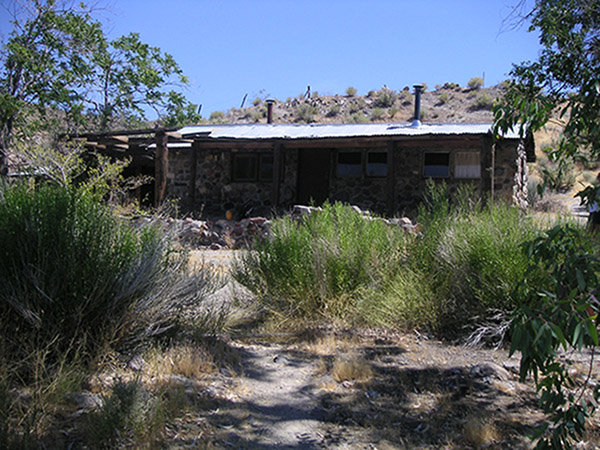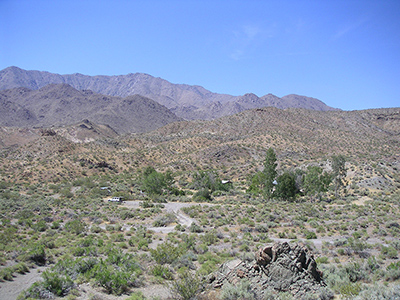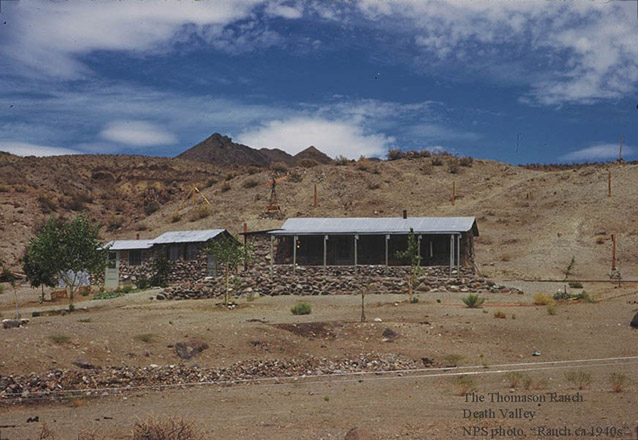Thomason/Barker Ranch is a five-acre property within Death Valley National Park. This historic site is located in the southern Panamint Range in the southwestern portion of the park, at an elevation of 3280 feet. Although the property is historically and currently referred to as a “ranch”, it should more accurately be described as a single-family primitive retirement retreat, or "primitive recreational ranch."
"The wash, even by day...was unbelievably rugged. It could take a good half a day to work your way up on foot, and even the toughest jeep would have a hard time against the boulders and narrow turns." Charles "Tex" Watson describing the Goler Wash and Barker Ranch in 1968, in Thomason/Barker Ranch Cultural Landscape Inventory

NPS

NPS
The Thomason/Barker Ranch embodies a distinctive pattern of settlement and social activity that were closely identified with this remote region of the California deserts from the 1930s -1950s. The Thomasons and Barkers were both part of a small number of primitive recreational ranchers who moved to the area—and to similarly remote areas of the desert—in order to enjoy the solitude and simplicity of living far from established civilization. These individuals were distinct from the pioneering homesteaders and miners who preceded them, because they did not depend on the immediate environment and its resources to sustain themselves. They were also distinct from other recreational ranchers and desert retirees, because they chose to live under conditions as primitive or nearly as primitive as those which characterized the life of earlier pioneers.
This way of life places them in a unique category which has few examples except in the desert. The activities and values of these primitivists constitute a distinct and important theme which has helped define the cultural character of the California deserts. With its surviving domestic, ranching, and recreational elements such as the main house, chicken coop, troughs, and swimming pool, the Thomason/Barker Ranch is the best surviving example of this theme within the boundaries of Death Valley National Park.

NPS
Quick Facts
- Cultural Landscape Type: Historic Site
- National Register Significance Level: Local
- National Register Significance Criteria: A
- Period of Significance: 1937-1957
Landscape Links
Last updated: December 30, 2020
